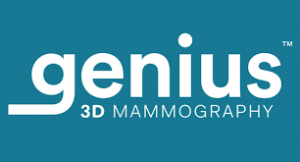Digital Mammography
Service Overview
What is Digital Mammography?
 Digital mammography uses computers and specially designed digital detectors to produce an image that can be displayed on a high-resolution computer monitor, and transmitted and stored just like computer files.
Digital mammography uses computers and specially designed digital detectors to produce an image that can be displayed on a high-resolution computer monitor, and transmitted and stored just like computer files.
From a patient’s point of view, having a digital mammogram is very much like having a conventional screen-film mammogram. Both film-based and digital mammography use compression and x-rays to create clear images of the inside of the breast. During all mammography exams, the technologist positions the patient to image the breast from different angles and compresses the breast with a paddle to obtain optimal image quality.
Unlike film-based mammography, digital mammograms produce images that appear on the technologist’s monitor in a matter of seconds. There is no waiting for film to develop, which can mean a shorter time spent in the breast imaging suite.
We offer 3D Genius mammography exams. FDA suggests it is the #1 choice for dense breasts. To learn more please visit https://www.mygenius3d.com/.

What are the Benefits of Digital Mammography?
- Faster exam time. The entire exam takes about 15-20 minutes, versus conventional mammography which can take twice as long. Digital mammography also greatly reduces the need for retakes dues to over or underexposure. This also has the potential to save time.
- Better images. The brightness, contrast, and magnification of each exam can be changed to enhance detail and the diagnostic information obtained. Digital mammography also reduces radiation scatter for higher contrast images, particularly in dense breast tissue.
- Computer-Aided Diagnosis (CAD). CAD is a software program that “reads” the mammogram in addition to the radiologist. Utilizing the physician and the computer improves detection of breast lesions, particularly microcalcifications.
Who Should Have a Mammogram?
The American Cancer Society recommends that all women have a baseline screening mammogram between the age of 35 and 40 and that after turning 40, women have an annual screening mammogram.
In addition to annual screening for women 40 and older, women with certain risk factors should discuss an appropriate screening program with their physician.
Risk Factors for Breast Cancer
Some of the known risk factors for breast cancer include:
- Family or personal history of breast cancer
- Early menstrual onset/late-onset menopause
- Use of oral contraceptives
- Use of hormone replacement therapy
- Alcohol use (2 or more drinks/day)
How is Mammography Performed?
- You will need to undress above the waist for your mammogram. You will be given a wrap to wear during the mammogram.
- You and a breast-imaging technologist will be the only individuals present during the mammogram. The technologist will position each breast, one at a time, on the mammography equipment. The breast will then be compressed, and the x-ray will be taken.
- Each x-ray will appear on the technologist’s computer screen, and she will be able to make sure each image shows the right view before positioning you for the next x-ray.
Are Mammograms Painful?
Breast compression may cause some discomfort for a brief time during each x-ray, but it should not be painful.
Breast compression helps obtain better x-rays by:
- Flattening the breast so that the maximum amount of tissue can be examined.
- Allowing a lower x-ray dose to be used, since the x-ray beams pass through a thinner amount of tissue.
- Holding the breast in place to prevent blurring caused by motion.
If you have sensitive breasts, schedule your mammogram at a time of the month when your breasts will be less tender. In general, the week after a period is when breasts are less tender.
Preparation
How to Prepare for Your Digital Mammogram
- Please plan on arriving 30 minutes prior to your appointment for patient registration.
- No powder or deodorant in chest or underarm area.
- If you have had prior mammograms performed at other imaging facilities please notify the Scheduling Department so the study may be requested for comparison. A release may be required to obtain your prior mammogram. The Scheduling Department can be contacted at: 559.447.4018.